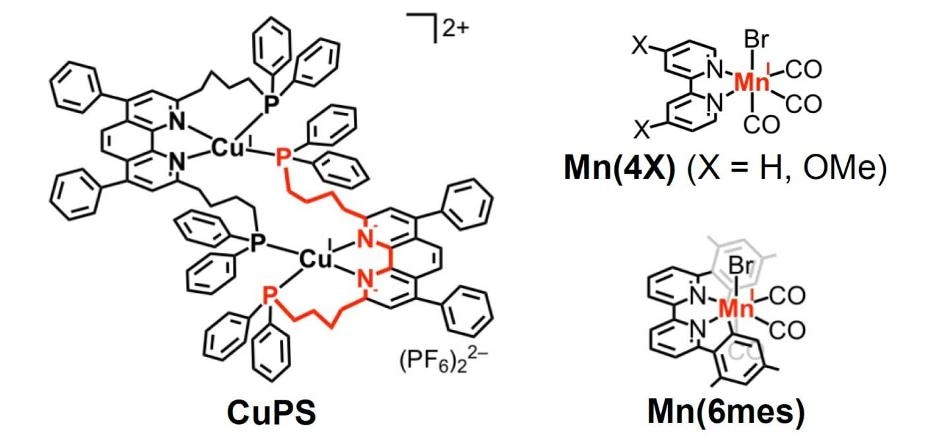Dec 3 2018
Scientists at Tokyo Institute of Technology have formulated a CO2 reduction technique based solely on frequently occurring elements. Realizing a 57% overall quantum yield of CO2 reduction products, it is the highest performing system of its kind reported till now, paving the way for economical carbon capture solutions.
 This is the structure of CuPS, the copper complex that behaves as a redox photosensitizer, and the manganese-based catalyst developed in the study. (Credit - Journal of the American Chemical Society)
This is the structure of CuPS, the copper complex that behaves as a redox photosensitizer, and the manganese-based catalyst developed in the study. (Credit - Journal of the American Chemical Society)
As global warming poses one of the biggest challenges to humanity in the 21st century, the mission to control mounting CO2 emissions is more persistent than ever.
In a research published in the Journal of the American Chemical Society, Osamu Ishitani and colleagues at Tokyo Institute of Technology (Tokyo Tech) and Japan’s National Institute of Advanced Industrial Science and Technology report a photocatalytic system that takes researchers closer to realizing artificial photosynthesis—the goal of developing a sustainable system similar to the way that plants change CO2 to useful energy by utilizing earth abundant metals.
Metal-complex photocatalytic systems have been reported for CO2 reduction; however, a number of them used noble- and/or rare-metal complexes. Compared to these methods that utilize rare metals (such as rhenium and ruthenium), the use of earth abundant metals is “greener” and economical, and has, therefore, garnered a lot of interest.
Their new process is composed of two components—a copper complex (CuPS) that acts as a redox photosensitizer and a manganese-based catalyst, Mn(4OMe).
CuPS was established to be a stable and effective redox photosensitizer, as decomposition was only 2% after 12 hours of irradiation. Furthermore, CuPS displayed a much stronger reduction capability compared to other photosensitizers examined thus far.
The team stated that the total quantum yield of CO2 reduction products was 57%, the turnover number based on the manganese catalyst was more than 1300 and the selectivity of CO2 reduction was 95%.
Particularly, the figure of 57% is extraordinary, as the scientists comment: "To the best of our knowledge, this is the highest quantum yield for CO2 reduction using abundant elements and the yield would be comparable to that obtained with rare metals."
The research draws attention to the way that incremental advances in chemistry may have a large influence on the broader goal of working towards a fossil-fuel-free future.
The study was supported by the Japan Science and Technology Agency's CREST program aimed at hastening strategic innovation.